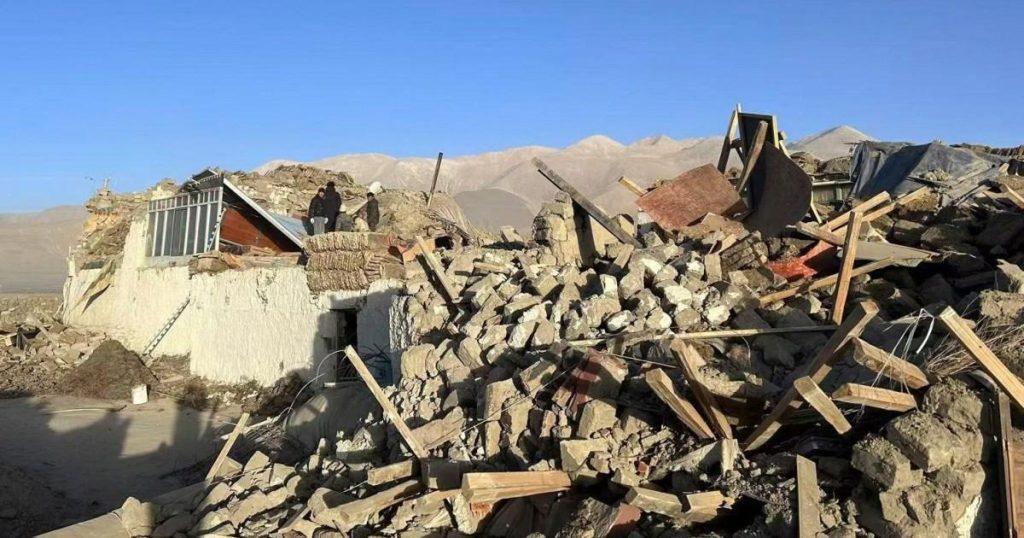Paragraph 1: The Earthquake and Initial Impact
A powerful earthquake struck the Tibet region of China on April 23, 2024, causing significant devastation and loss of life. Initial reports indicated a magnitude 6.8 quake, while the US Geological Survey later assessed it as magnitude 7.1. The epicenter was located approximately 50 miles northeast of Mount Everest, a region prone to seismic activity due to the convergence of the Indian and Eurasian tectonic plates. The quake’s shallow depth of six miles exacerbated its impact, unleashing destructive force across the Shigatse region, home to approximately 800,000 people. Early reports from China’s state-run Xinhua news agency confirmed at least 53 fatalities and 62 injuries on the Tibetan side.
Paragraph 2: Regional Impact and International Tremors
The earthquake’s impact extended beyond the immediate epicenter, sending tremors across a wide swathe of South Asia. The shaking was felt in Nepal’s capital, Kathmandu, about 250 miles away, prompting residents to flee their homes in fear. Tremors also reached Thimphu, the capital of Bhutan, and the northern Indian state of Bihar, which shares a border with Nepal. While initial reports from India indicated no immediate damage or casualties, the widespread reach of the earthquake highlighted the region’s vulnerability to seismic events. The proximity of the epicenter to Mount Everest raised concerns about the potential for avalanches and further casualties at the base camp.
Paragraph 3: Devastation and Rescue Efforts
The earthquake left a trail of destruction in its wake, with reports emerging of crumbled shop fronts, debris-strewn roads, and damaged houses. Videos circulating on social media captured the scenes of devastation in towns like Lhatse, showcasing the extent of the damage. Chinese President Xi Jinping immediately called for all-out search and rescue efforts to minimize casualties, provide shelter for displaced residents, and ensure a safe and warm winter for those affected. The mountainous terrain and remote location of some affected areas presented challenges for rescue and relief operations.
Paragraph 4: The Vulnerable Shigatse Region and Historical Context
The Shigatse region, the epicenter of the earthquake, holds significant cultural and religious importance as the traditional seat of the Panchen Lama, a prominent figure in Tibetan Buddhism. The region encompasses three townships and 27 villages within a 12-mile radius of the epicenter, with a combined population of approximately 6,900. The area’s vulnerability to earthquakes stems from its location along the volatile boundary of the Indian and Eurasian tectonic plates. The 2015 earthquake near Kathmandu, which tragically claimed 9,000 lives, served as a stark reminder of the region’s seismic risks.
Paragraph 5: China’s History of Seismic Activity and Disaster Response
China has a history of devastating earthquakes, particularly in the southwestern regions along the Tibetan plateau and its fringes. The collision of tectonic plates creates immense pressure, leading to powerful tremors that can reshape the landscape and cause widespread destruction. The 2008 Sichuan earthquake, measuring magnitude 7.9, resulted in nearly 90,000 deaths and prompted a nationwide effort to improve building codes and earthquake preparedness. Other notable earthquakes in recent decades have struck Yunnan, Qinghai, and Gansu provinces, highlighting the ongoing challenge of mitigating the risks of seismic activity in these vulnerable regions.
Paragraph 6: Immediate Aftermath and Ongoing Relief Efforts
In the immediate aftermath of the earthquake, local government officials in the Shigatse region initiated efforts to assess the damage and identify casualties. Communication with remote villages became a priority to gauge the extent of the devastation and coordinate relief efforts. The Chinese government mobilized resources to support search and rescue operations, provide emergency medical assistance, and offer shelter and supplies to displaced residents. The international community also offered assistance, expressing solidarity with China and the affected communities. The focus shifted towards long-term recovery, including rebuilding infrastructure, providing psychological support to survivors, and implementing measures to enhance earthquake resilience in the future.


